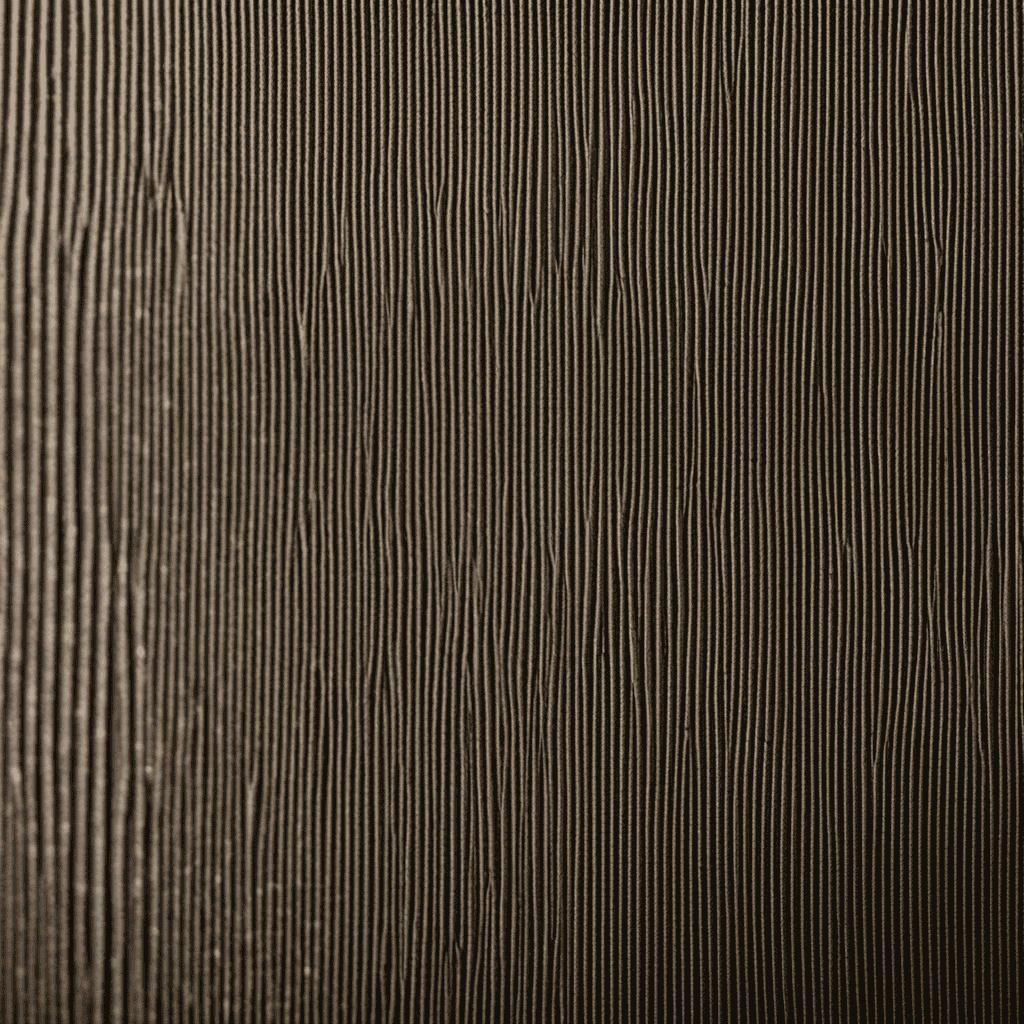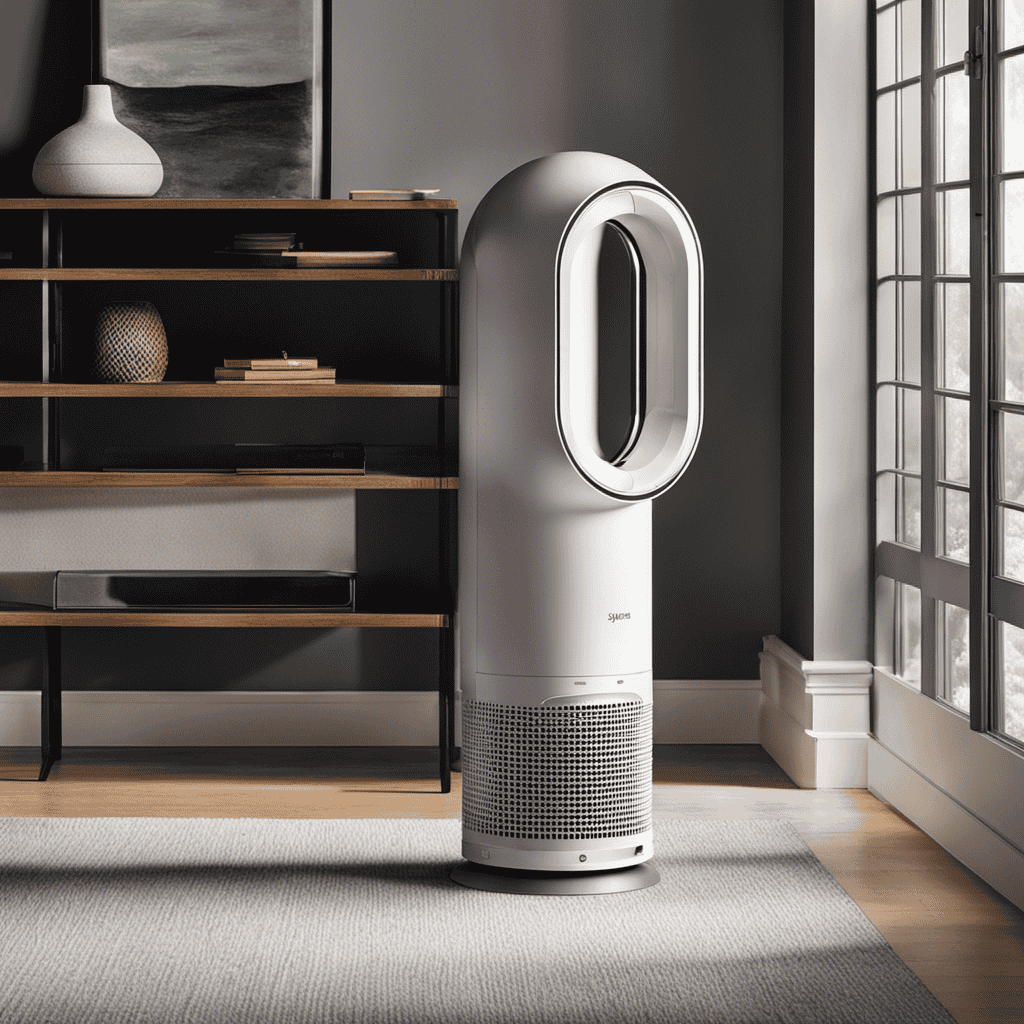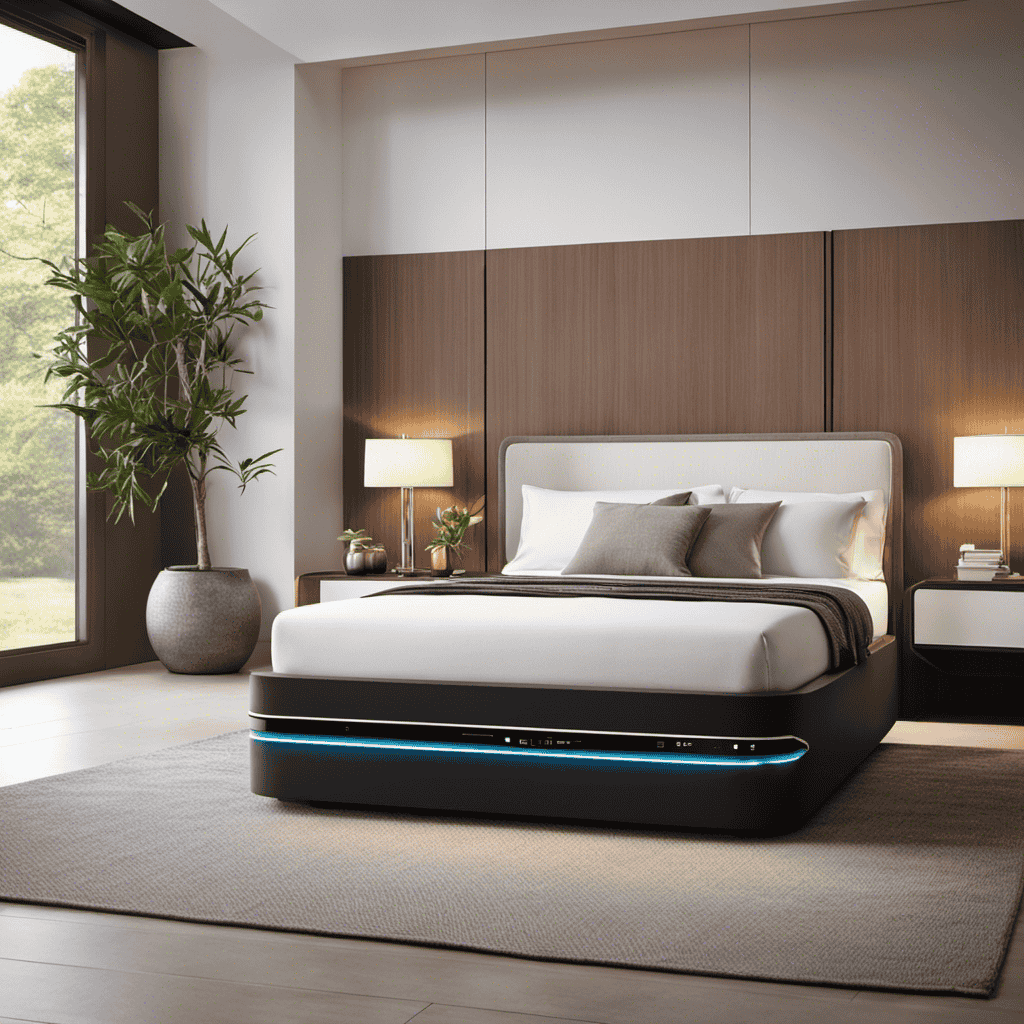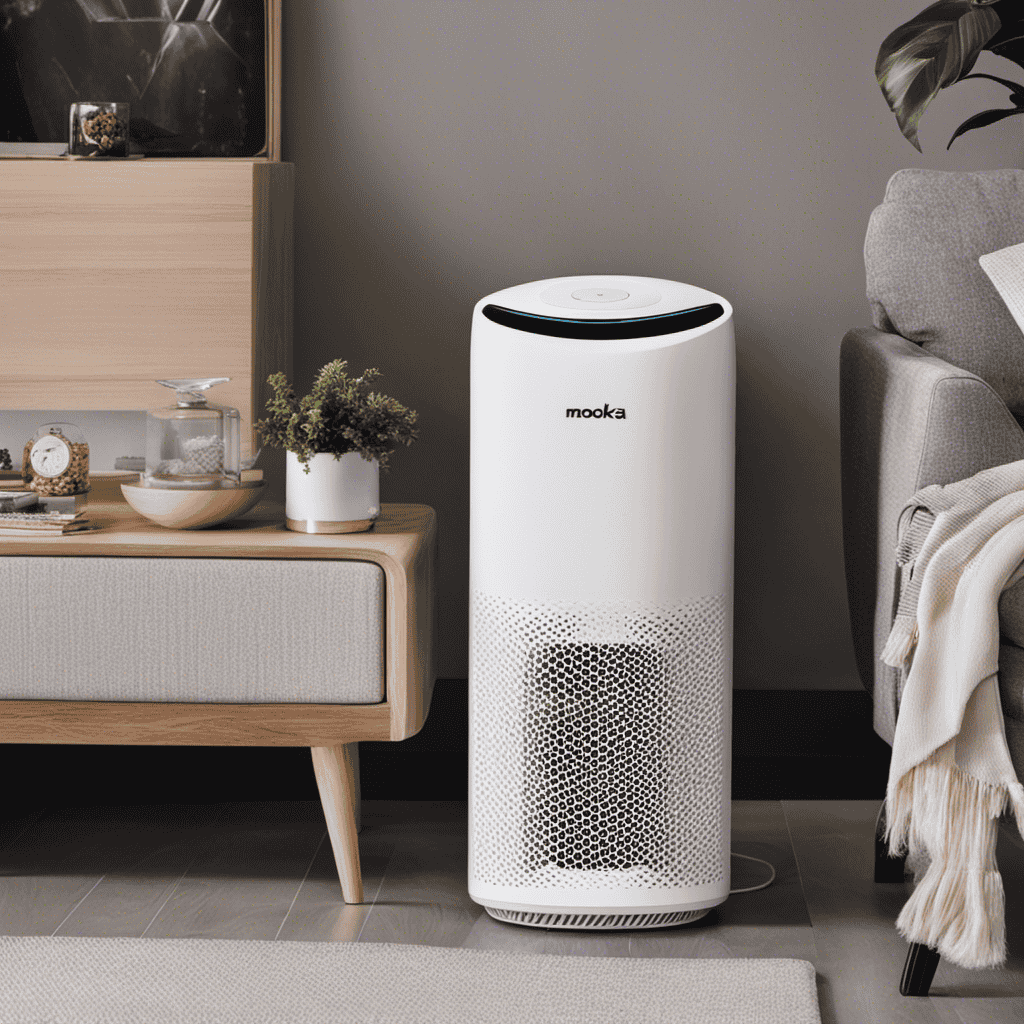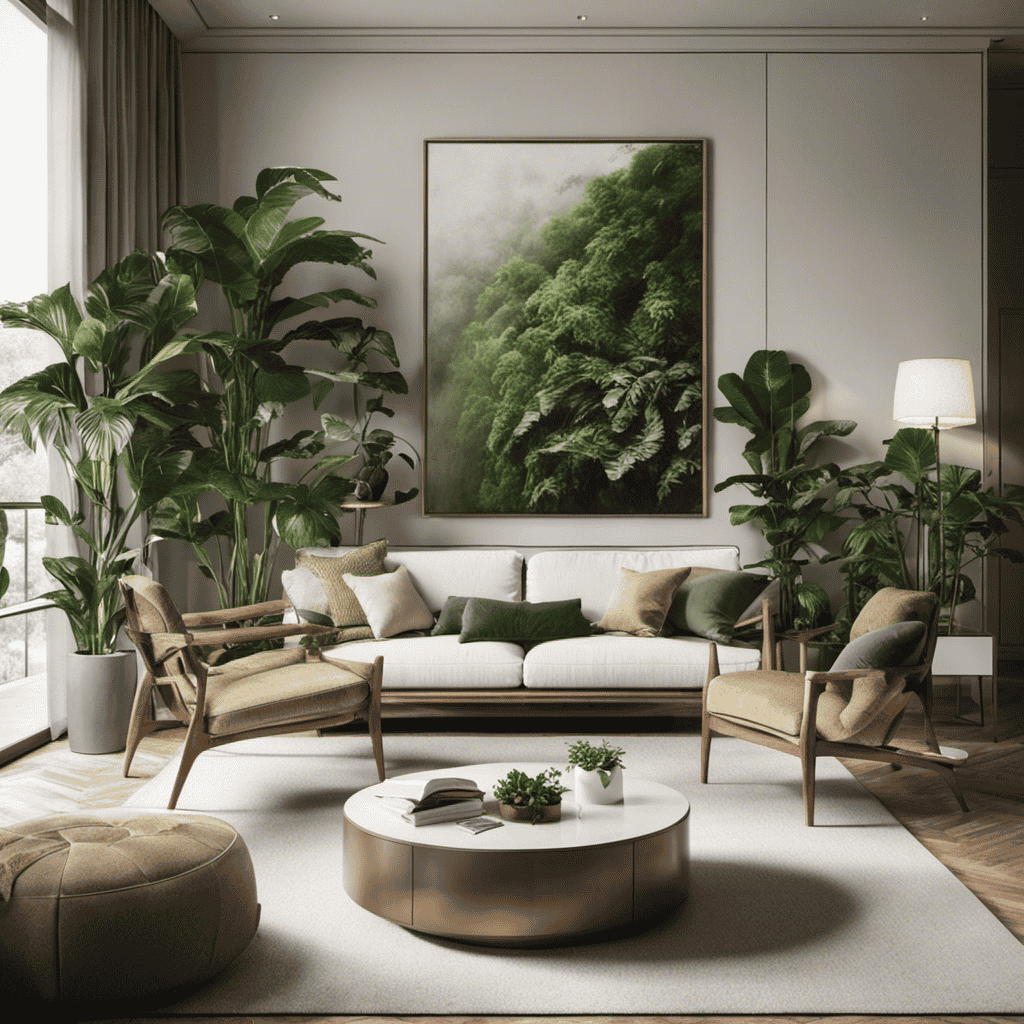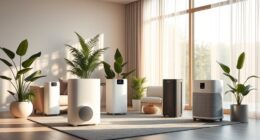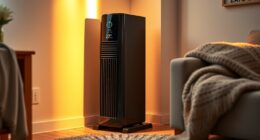As someone who owns an air purifier, I frequently caught myself pondering the question, ‘How frequently should the filter be changed?’ It appears there isn’t a universal solution to this query. The frequency of replacement is contingent upon several aspects like the quality of air surrounding you and the specific kind of filter in use.
In this article, we’ll explore the recommended replacement frequency, signs that indicate it’s time to change your filter, and tips to extend its lifespan. By the end, you’ll have all the knowledge you need to keep your air purifier running efficiently and your air clean and fresh.
Key Takeaways
- Proper filter maintenance and regular replacement are crucial for optimal performance.
- The recommended frequency to change an air purifier filter is typically every 3-6 months.
- Signs that your filter needs to be replaced include reduced airflow, decline in air quality, unpleasant odors, and dusty residue around the air purifier.
- Extending the lifespan of your air purifier filter can be achieved through regular cleaning, monitoring for damage or clogging, and troubleshooting common filter issues.
Factors That Determine Filter Lifespan
There are several factors that determine how long an air purifier filter lasts. Proper filter maintenance and regular replacement are crucial for optimal performance.
Filter maintenance includes cleaning or replacing the pre-filter and checking for any debris or blockages. Regular filter replacement is important because over time, the filter becomes less effective at capturing airborne particles such as dust, pollen, and pet dander.
Factors that affect filter lifespan include the air quality in your environment, the size of the room, and the frequency of use. If you live in an area with high pollution levels or have pets, you may need to replace the filter more frequently. Additionally, larger rooms or areas with a higher occupancy might require more frequent filter changes.
It’s essential to understand these factors to determine the recommended filter replacement frequency.
Recommended Filter Replacement Frequency
The recommended frequency to change an air purifier filter is typically every 3-6 months. However, there are several factors that can affect the efficiency of the filter and may require more frequent replacements. These factors include the air quality in your area, the level of pollutants in your home, and the usage of the air purifier. If you live in an area with high levels of pollution or have pets or smokers in your home, you may need to change the filter more often. Regular filter replacement has several benefits. It helps to maintain the performance of the air purifier and ensures that it is removing pollutants effectively. It also helps to improve indoor air quality and reduce the risk of respiratory issues.
| Factors Affecting Filter Efficiency | Benefits of Regular Filter Replacement |
|---|---|
| High levels of pollution | Maintains air purifier performance |
| Pets or smokers in the home | Improves indoor air quality |
| Usage of the air purifier | Reduces risk of respiratory issues |
Signs That Your Filter Needs to Be Replaced
If your filter is not effectively removing pollutants or improving indoor air quality, it may be time for a replacement. There are several signs that indicate your air purifier filter needs to be replaced.
One of the most obvious signs is reduced airflow. If you notice that your air purifier is not producing the same amount of air as before, it could be due to a clogged filter.
Another sign is a decline in air quality. If you start experiencing more allergies or respiratory issues, it could be a sign that your filter is no longer effectively capturing pollutants.
Additionally, if you notice an unpleasant odor or a dusty residue around your air purifier, it’s a clear indication that your filter is not doing its job.
By recognizing these signs, you can ensure the efficiency of your air purifier by replacing the filter when needed.
Now, let’s explore how you can extend the lifespan of your air purifier filter.
Extending the Lifespan of Your Air Purifier Filter
When it comes to extending the lifespan of your air purifier filter, there are a few key points to consider.
First, proper maintenance techniques are crucial in ensuring the filter functions optimally for as long as possible.
Secondly, there are various tips and tricks you can employ to extend the filter’s lifespan, such as using pre-filters and regularly vacuuming or dusting the unit.
Lastly, it’s important to understand the difference between cleaning and replacing the filter, as sometimes a simple cleaning can help prolong its effectiveness, while other times a replacement is necessary for optimal air purification.
Proper Maintenance Techniques
Regularly replacing an air purifier filter is essential for proper maintenance. By following proper filter maintenance techniques, you can ensure that your air purifier continues to function effectively.
One important technique is to regularly clean the filter. This can be done by gently vacuuming or rinsing the filter, depending on the manufacturer’s instructions.
Another important technique is to monitor the filter for any signs of damage or clogging. If you notice that the filter is torn or excessively dirty, it may need to be replaced.
Troubleshooting common filter issues, such as strange odors or reduced airflow, can also help prolong the lifespan of your filter. By addressing these issues promptly, you can prevent further damage and extend the filter’s longevity.
This proper filter maintenance will be further complemented by the filter lifespan extension tips I will discuss in the next section.
Filter Lifespan Extension Tips
To extend the lifespan of your filter, make sure to follow these helpful tips. Regular maintenance is key to keeping your air purifier filter functioning at its best. Cleaning methods can vary depending on the type of filter you have, so be sure to consult the manufacturer’s instructions. DIY filter replacement techniques can also help prolong the life of your filter. By gently vacuuming or washing reusable filters, you can remove trapped particles and restore their effectiveness. Additionally, using a pre-filter can help protect the main filter from excess debris. Remember to check and replace your filter as needed to ensure optimal performance. Following these tips will not only extend the lifespan of your filter but also improve the air quality in your home.
| Filter Cleaning Methods | DIY Filter Replacement Techniques |
|---|---|
| Vacuuming | Gently wash reusable filters |
| Wiping with a damp cloth | Use pre-filters to protect the main filter |
| Using compressed air | Regularly check and replace filters |
Cleaning Versus Replacement
Remember that cleaning your filter is an essential step in maintaining its effectiveness and prolonging its lifespan.
There are various cleaning methods you can employ, depending on the type of filter you have. For reusable filters, a simple rinsing with warm water and mild soap can do the trick. Be sure to thoroughly dry it before reinserting it into the air purifier.
However, not all filters are reusable, and some may require replacement instead of cleaning. When considering whether to clean or replace your filter, it’s important to do a cost comparison. In some cases, cleaning may be a more cost-effective option, especially if the filter is still in good condition.
However, if the filter is heavily soiled or damaged, it’s best to opt for replacement to ensure optimal air purification and prolong the lifespan of your air purifier.
How to Properly Replace an Air Purifier Filter
When it comes to maintaining the effectiveness of your air purifier, two key factors to consider are the frequency of filter replacement and the correct installation techniques.
Properly replacing your air purifier filter at the recommended intervals is crucial for ensuring optimal air quality in your home.
Additionally, knowing the correct installation techniques will help maximize the performance of your air purifier and extend its lifespan.
Filter Replacement Frequency
You should check the manufacturer’s recommendations for how often you need to replace your air purifier filter. Regularly replacing your air purifier filter is crucial for maintaining optimal air quality in your home.
Here are four factors that can affect the efficiency of your filter and the benefits of regular filter replacement:
-
Air Quality: If you live in an area with high levels of pollution or allergens, your filter may need to be replaced more frequently to handle the increased workload.
-
Pet Hair and Dander: If you have pets, their hair and dander can quickly clog up your filter, reducing its efficiency. Regular filter replacement helps ensure that pet-related pollutants are effectively removed from the air.
-
Filter Type: Different filter types have different lifespans. HEPA filters, for example, typically last longer than activated carbon filters. Checking the manufacturer’s recommendations will help you determine the appropriate replacement schedule for your specific filter.
-
Health Benefits: Regularly replacing your air purifier filter helps prevent the buildup of pollutants and allergens in your home, which can improve indoor air quality and reduce the risk of respiratory issues and allergies.
Correct Installation Techniques?
To ensure proper installation of your air purifier filter, make sure to follow the manufacturer’s guidelines and use the recommended techniques. Incorrect installation can lead to poor performance and potential damage to the filter. Here are some common installation mistakes and troubleshooting tips:
| Common Installation Mistakes | Troubleshooting Tips |
|---|---|
| Not removing the packaging | Remove all packaging materials before installing the filter. |
| Placing the filter in the wrong direction | Check the arrows or markings on the filter for proper orientation. |
| Forgetting to replace the filter seal | Ensure that the filter seal is properly in place to prevent air leaks. |
| Over-tightening the filter | Hand-tighten the filter, do not overtighten as it may damage the filter or the unit. |
| Neglecting to clean the air purifier before installation | Clean the unit as per the manufacturer’s instructions before installing the filter. |
Different Types of Air Purifier Filters and Their Lifespan
The lifespan of different types of air purifier filters varies, so it is important to understand their effectiveness and debunk common misconceptions. Here are four key points to consider:
-
HEPA Filters: These high-efficiency particulate air filters are highly effective in removing 99.97% of airborne particles as small as 0.3 microns. They typically last for 6 to 12 months, depending on usage and air quality.
-
Carbon Filters: These filters excel at removing odors, gases, and chemicals from the air. Their lifespan ranges from 3 to 6 months, but this can vary based on the level of pollutants in the environment.
-
Pre-Filters: These filters capture larger particles like pet hair and dust, prolonging the lifespan of the main filter. They usually need replacement every 3 months.
-
Washable Filters: Some air purifiers come with washable filters that can be reused after cleaning. These filters can last for several years, saving money in the long run.
Understanding the lifespan of different air purifier filters is crucial for maintaining their effectiveness and ensuring clean indoor air quality.
Maintenance Tips to Prolong Your Air Purifier Filter’s Lifespan
Regular cleaning and proper maintenance of your air purifier filter can significantly extend its lifespan. By following a few simple steps, you can ensure that your air purifier continues to provide you with clean and fresh air for a long time. Here are some maintenance tips to help you prolong the lifespan of your air purifier filter:
- Regularly clean the pre-filter to remove larger particles and debris.
- Check the filter indicator light or timer to know when it’s time to replace the filter.
- Vacuum or brush the HEPA filter gently to remove accumulated dust and dirt.
- Rinse or wash the carbon filter, if applicable, to remove odors and impurities.
- Keep your air purifier in a clean and dust-free environment to prevent clogging and damage.
Frequently Asked Questions
What Are the Benefits of Using an Air Purifier Filter?
Using an air purifier filter improves indoor air quality by removing contaminants like dust, pollen, and pet dander. It also helps reduce allergies and respiratory issues. Regular maintenance ensures optimal efficiency.
Can I Clean and Reuse an Air Purifier Filter?
Cleaning an air purifier filter can help extend its lifespan and save money. However, it’s important to note that cleaning effectiveness may vary, and there are no guaranteed alternative methods for cleaning and reusing a filter.
Is It Necessary to Replace the Filter if the Air Purifier Has a Filter Replacement Indicator?
It is necessary to clean the air purifier filter even if the indicator doesn’t show the need for replacement. Without a filter replacement indicator, it is important to regularly check and replace the filter to ensure proper functioning.
Are All Air Purifier Filters the Same Size?
Yes, air purifier filters are not reusable. They need to be replaced regularly to maintain optimal performance. Common sizes of air purifier filters vary, but most manufacturers provide filters that fit a range of models.
What Factors Can Cause the Lifespan of an Air Purifier Filter to Vary?
Air quality plays a significant role in the lifespan of an air purifier filter. Poor air quality with more pollutants will require more frequent filter replacements. The size of the room can also impact filter replacement frequency.
Conclusion
In conclusion, it’s important to regularly replace your air purifier filter to ensure its optimal performance. The lifespan of the filter depends on various factors such as air quality, usage, and the type of filter.
Pay attention to signs like reduced airflow or unpleasant odors, indicating a need for replacement. By properly maintaining and cleaning your filter, you can extend its lifespan.
Remember, neglecting your filter is like neglecting your own health; it’s like breathing in a crowded elevator on a hot summer day. So, take care of your filter and breathe fresh, clean air.
